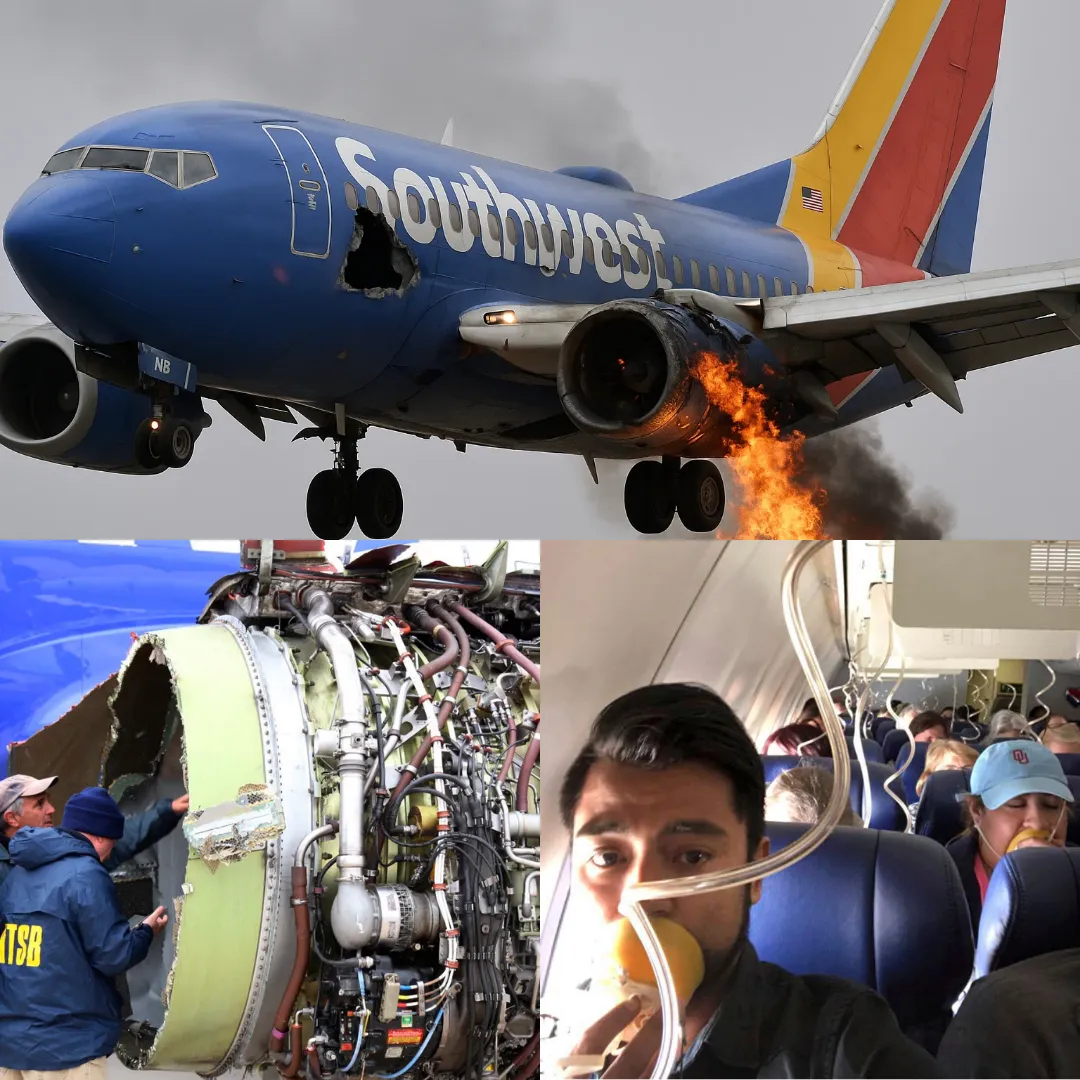
On the stormy night of November 12, 1995, American Airlines Flight 1572 became the center of one of the most nerve-wracking incidents in U.S. aviation history, proving that when nearly everything goes wrong in the sky, only skill, luck, and raw instinct stand between life and tragedy.
Seventy-three passengers and five crew had set out from Chicago O’Hare, expecting an uneventful two-hour hop to Bradley International in Hartford, Connecticut. But as they hurtled east, their journey transformed into a white-knuckle ordeal marked by delays, pounding thunderstorms, and winds so violent that the very windows of Bradley’s control tower were flexing under pressure.
As the night deepened and the weather grew worse, Flight 1572 fell farther behind schedule, finally pushing back nearly two hours late. Captain Kenneth Lee, an accomplished pilot with over 8,000 hours, and First Officer John Richards, a 5,000-hour veteran, prepared for a flight that would demand everything they had learned in decades of flying—and then some.
Even before leaving Chicago, both men were on edge, and as the MD-83 climbed into the turbulent night, a cascade of meteorological and technical challenges began to pile up.
The trouble started quietly, hidden inside routine cockpit checklists and weather updates. Like all jet pilots, Lee and Richards relied on up-to-the-minute barometric pressure settings to calibrate their altimeters—without the right setting, their instruments would show them to be higher than reality, a potentially deadly mistake when flying blind through thick clouds.
On this night, however, the East Coast’s atmospheric pressure was plummeting by the hour, dropping so quickly that the latest readings were already outdated by the time they were transmitted. As a result, the pilots’ altimeters consistently overestimated their height above the rugged terrain around Hartford.
This invisible hazard was compounded by American Airlines’ own procedures: at the time, the company required pilots to set their main altimeter to a calculated “zero-on-touchdown” setting, which, while helpful at airports around the country, demanded extra vigilance to ensure both altimeters agreed with actual field elevation.
Tonight, under pressure and distracted by the fast-changing weather, both pilots fell into the trap—using an altimeter setting that was not only out of date, but also incorrectly copied into their standby instruments. As they crossed into Connecticut airspace, the gap between where their instruments thought they were and reality began to widen, setting the stage for a terrifying near-miss.
Bradley approach was battered by the storm. Torrential rain pounded the tarmac, and gusts over 39 knots threatened to blow any plane off course. Inside the cockpit, Lee and Richards fought to keep their MD-83 lined up with Runway 15, dodging severe turbulence and coping with a flood of confusing information. When they finally received a new altimeter setting, it was already over an hour old, and the actual atmospheric pressure had since dropped even lower.
Both men missed the significance, and neither thought to request a more up-to-date reading. Compounding the situation, the approach controller—stretched thin as the control tower itself had to be evacuated—neglected to offer the latest setting, a simple omission that would soon prove critical.
As the MD-83 approached Hartford, the storm reached a crescendo. The tower, buffeted by winds and leaking rain, was no longer fit for duty, and a supervisor who hadn’t manned the controls in three years was hastily dispatched to assist.
The pilots, meanwhile, descended according to their charts, aiming to intercept the minimum descent altitude (MDA) of 908 feet above the airport’s field elevation. But the rapidly falling pressure meant that, unbeknownst to them, they were already lower than their instruments indicated.
To make matters worse, Bradley’s approach charts, unlike their British Airways counterparts, failed to depict the full extent of the terrain below. Just two and a half miles from the runway, a ridge loomed at 819 feet—almost exactly in the path of Flight 1572.
Inside the cockpit, the pressure was palpable. The captain warned the first officer to “watch me the whole way,” but as rain lashed the windscreen and turbulence rattled the airframe, both men were overwhelmed. The first officer, responsible for monitoring altitude, was momentarily distracted, searching for the runway lights through the murk. At the crucial moment, the MD-83 slipped below the MDA.
By the time the first officer shouted a warning, the aircraft was already too low. The captain, instead of immediately initiating a climb, engaged the autopilot’s altitude hold—a fateful decision. Four seconds later, the sinking aircraft smashed through the treetops atop the ridge, a spray of branches and leaves bursting into the engines. In the chaos, one engine flamed out instantly, the other sputtering to a stop soon after.
What followed was pure aviation drama. The cockpit voice recorder captured the frantic exchange as both pilots wrestled with the dying airplane. “Go around! Go around! We’re going! Going around!” the captain shouted as he advanced the throttles, desperately trying to coax lift from his crippled jet.
The first officer managed to lower the flaps and, after a tense exchange, confirmed that the landing gear was still down. Miraculously, the battered aircraft cleared the remaining trees, clipped the ILS antenna, and slammed down onto the very edge of the stopway—seconds from disaster, but safely on the ground.
Astonishingly, all 78 people on board survived, with only one minor injury. As smoke curled from the crippled engines, the crew ordered a swift evacuation, and in the minutes that followed, the storm-tossed passengers stumbled away from a crash site that could have been a mass grave.
The NTSB’s investigation would later highlight a sequence of avoidable errors: outdated altimeter settings, failure to request updates, and the missed callouts that allowed the MD-83 to descend far below a safe height. The controller’s own lapse—neglecting to provide a new pressure reading—was also cited as a contributing factor.

Yet for all their failings, the actions of Lee and Richards after the tree strike won praise. Their quick thinking, adherence to emergency checklists, and iron nerves in the cockpit kept the disaster from spiraling into tragedy. Investigators commended the captain’s “excellent crew resource management and flight skills” for bringing the aircraft down in a survivable landing zone—had they missed by even a few hundred yards, the outcome would have been unthinkable.
In the months that followed, the harrowing escape of American 1572 sent shockwaves through the aviation world. Airlines and regulators reevaluated procedures for altimeter settings, terrain awareness, and communication during high-stress approaches.
New emphasis was placed on providing up-to-the-minute pressure readings, ensuring that controllers were trained to offer critical data in rapidly changing weather, and improving approach charts to clearly mark all hazards along the flight path. But perhaps the most enduring legacy of that night was a renewed commitment to cockpit discipline.
In the words of one investigator: “It takes only a moment’s distraction, a single outdated setting, for disaster to strike. But it is skill and teamwork that decide whether that moment ends in tragedy or survival.”
As American 1572’s battered jet was repaired, put back into service, and finally retired in 2017, its story lived on in the memories of those who walked away from the crash—and in the annals of an industry that learned once again that in aviation, vigilance is never optional, and luck always favors the prepared.



-1751104165-q80.webp)
